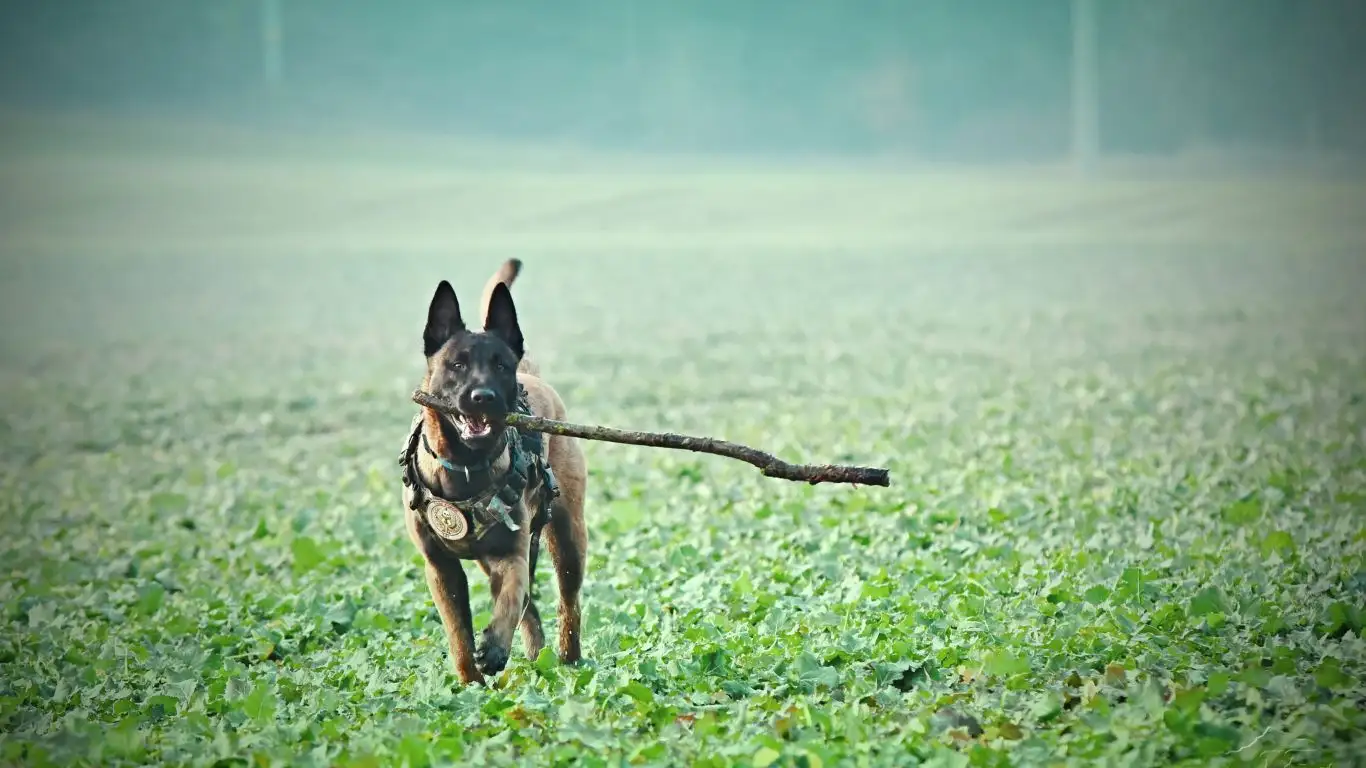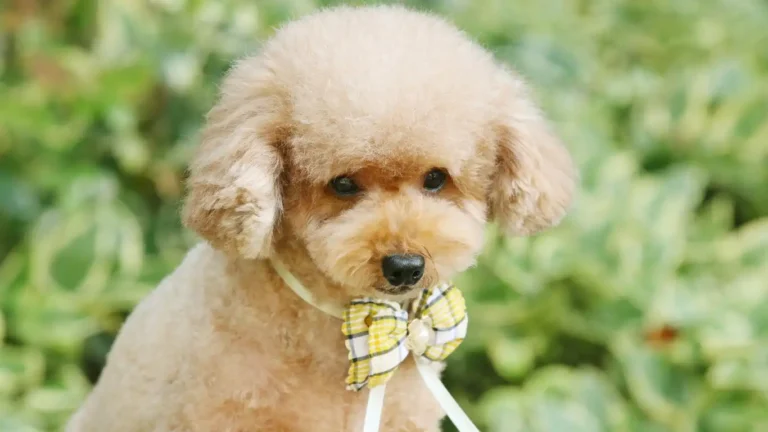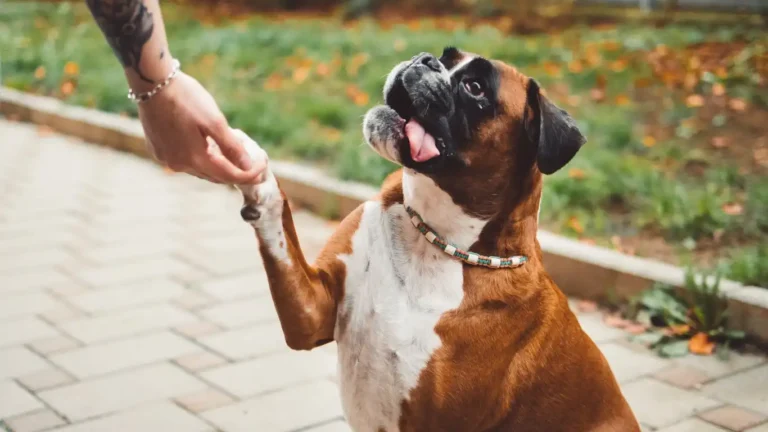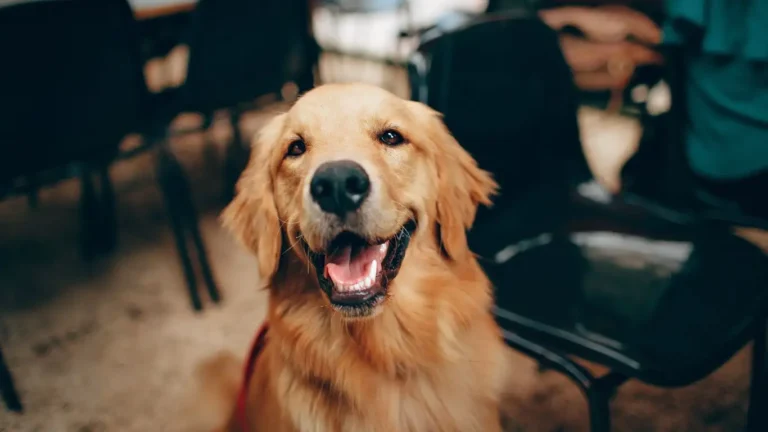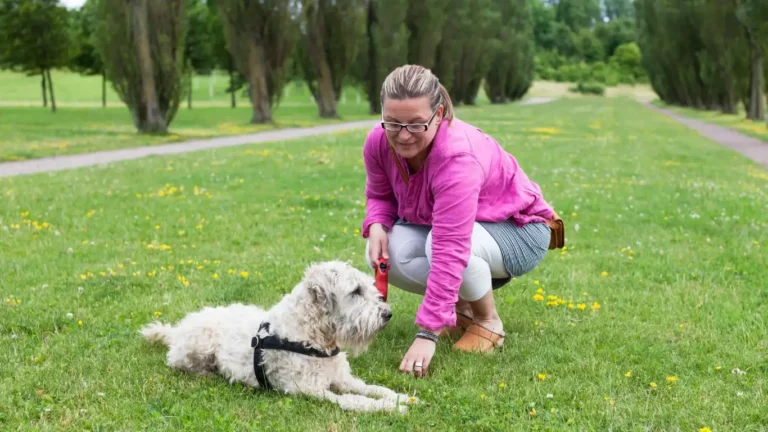Master Brain Training Games: How to Train Your Dog to Enjoy Them
Training a dog is a rewarding journey, especially when it comes to brain training games that can keep your furry friend mentally sharp and engaged. If you’re wondering how to train a dog to enjoy brain training games, you’re in the right place! As a Canine-Assisted Therapy Trainer, I’ve seen firsthand how mental stimulation can transform dogs, boosting their focus, confidence, and overall well-being. It’s not just about the tricks and obedience but about creating a bond through activities that challenge their minds. So, how do you get started? Let’s dive in and explore practical tips to make your dog’s brain training fun, effective, and rewarding.
What is Brain Training for Dogs?
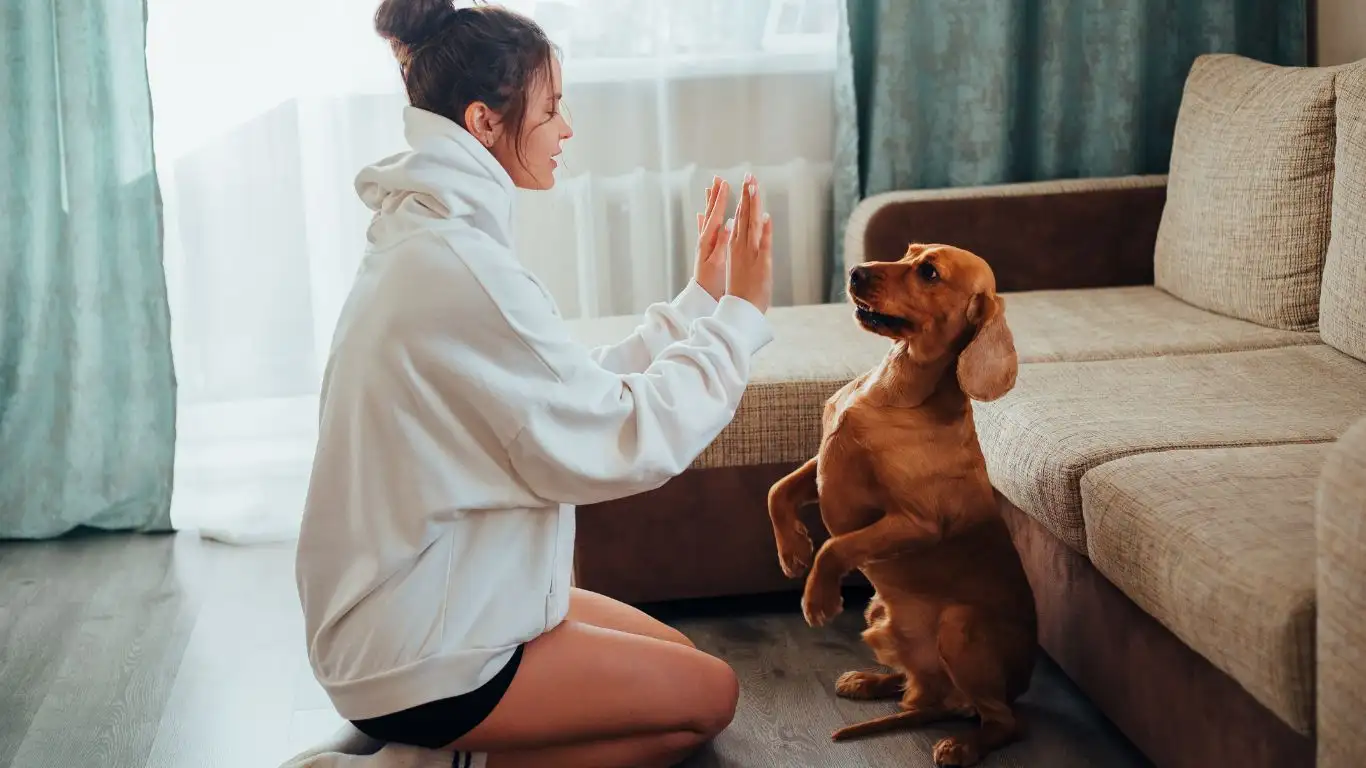
Before we get into the nuts and bolts of training your dog to enjoy brain games, let’s first understand what brain training for dogs is all about. Brain training involves activities that stimulate a dog’s mental faculties, encouraging them to think, problem-solve, and engage in critical thinking. These activities can range from puzzle games to scent work, obedience drills, and interactive toys that require your dog to figure things out.
While dogs naturally have energy to burn, their minds need exercise too! Just like humans, dogs can benefit from challenging activities that not only keep them occupied but also make them feel accomplished. Plus, brain games are a fantastic way to bond with your dog and introduce a sense of playfulness into training. But how do you make these games enjoyable for your dog? Let’s get into it!
Start with Simple Games and Gradually Increase Difficulty
When you’re beginning to train your dog to enjoy brain training games, the key is to start slow and build up. Think of it as laying the foundation for more advanced challenges. It’s essential to choose games that are appropriate for your dog’s skill level and personality. If you overwhelm them too soon, you risk frustrating them, which can make them less eager to participate.
- Interactive Treat Toys: These are perfect for beginners. Toys like Kongs or puzzle feeders can engage your dog’s problem-solving skills while keeping them motivated with a tasty reward.
- Scent Games: Hide treats around the house or in the yard and let your dog sniff them out. It’s a great way to start brain training while tapping into their natural instincts.
- Simple Command Games: Teach your dog basic commands such as ‘sit,’ ‘stay,’ or ‘find it’ to set the stage for more complex tasks.

Use Positive Reinforcement to Make Training Fun
One of the most effective methods for encouraging your dog to enjoy brain training games is through positive reinforcement. I’ve seen how rewarding this approach can be in my work as a Canine-Assisted Therapy Trainer. It’s all about creating a positive experience for your dog, where they associate the game with something enjoyable.
Here are some tips for using positive reinforcement effectively:
- Use Treats Wisely: Offering a small treat after each successful attempt will motivate your dog to keep going. Just be sure the treat is small enough that they’re not distracted by too much food.
- Praise and Encouragement: A cheerful voice and enthusiastic praise go a long way. Dogs are incredibly perceptive and can pick up on your excitement, which can encourage them to stay engaged.
- Keep Sessions Short and Sweet: Dogs have short attention spans, so it’s best to keep training sessions under 15 minutes. This ensures they stay focused and avoid becoming frustrated.
Keep It Fun: Incorporate Play into Training
One of the best things about brain training games is that they don’t have to be “work” in the traditional sense. In fact, the more fun and engaging the game, the more likely your dog will want to participate. Make sure you’re incorporating play into the process to keep your dog’s interest high.
- Use Toys: Interactive toys that require your dog to solve a puzzle or retrieve a hidden treat can turn the training process into a playful challenge.
- Change Up the Routine: Dogs can get bored with repetitive tasks, so don’t hesitate to mix things up with new games, environments, or challenges.
- Playful Obedience Drills: Incorporating some light-hearted obedience drills (e.g., ‘sit,’ ‘down,’ ‘roll over’) alongside brain games can keep your dog engaged while reinforcing important skills.
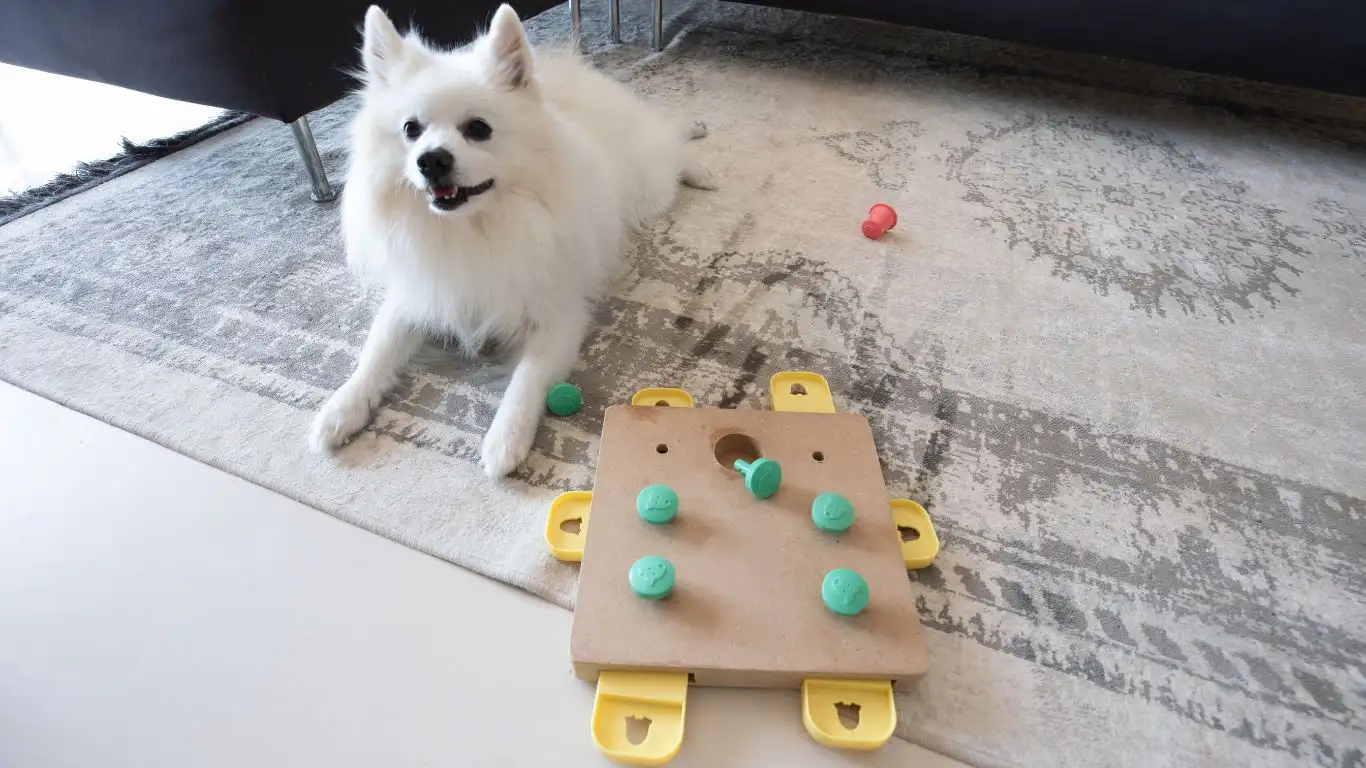
Know Your Dog’s Personality and Adjust Accordingly
Every dog is different, and it’s essential to tailor brain training games to fit your dog’s unique personality. Some dogs are naturally more independent, while others are social and eager to please. Understanding your dog’s preferences can help you select the best games to keep them motivated.
For example, if you have a dog who loves to play fetch, you could incorporate brain games into fetch by hiding treats around the yard or tossing the ball into an obstacle course. If your dog is more food-driven, puzzle toys or scent games will be a hit. Keep in mind that dogs with high energy levels may need more physically demanding brain games, whereas more laid-back dogs may prefer quieter, problem-solving activities.
By understanding your dog’s needs and adjusting accordingly, you’re setting them up for success and enjoyment in their brain training journey!
Incorporating Advanced Brain Training Games

Now that you’ve got the basics covered, it’s time to ramp up the challenge and incorporate more advanced brain training games. In my experience, dogs love the challenge when they feel they’ve mastered the simpler games and are ready for more. As a Canine-Assisted Therapy Trainer, I’ve worked with dogs who thrive when presented with puzzles that test their problem-solving abilities and reward them with meaningful outcomes. The goal is to keep your dog engaged while progressively increasing the difficulty level.
Advanced brain training games not only provide mental stimulation but also help strengthen the bond between you and your dog. These games will help improve your dog’s ability to focus, learn new skills, and follow complex instructions. So, let’s dive into some of the more advanced brain training games that will challenge your dog and provide even more fun.
1. The “Which Hand” Game
This classic game is a great way to challenge your dog’s memory and sense of smell. It’s as simple as it sounds, but it will push your dog to use their problem-solving abilities to choose the right hand that holds the treat. Start by hiding a treat in one of your hands, then present both fists to your dog. Your dog will need to sniff and choose which hand contains the treat. At first, this might be a guessing game, but soon enough, your dog will figure out the rules!
Make sure to keep the game interesting by switching up the location of the treats and adding more complexity as your dog catches on. For example, you can increase the difficulty by hiding treats in different places around the house or yard and incorporating distractions.
2. The Muffin Tin Game

If you’re looking for a creative way to enhance your dog’s problem-solving skills, the muffin tin game is a fantastic choice. For this game, you’ll need a muffin tin, some tennis balls, and a few treats. Place the treats in the bottom of the muffin tin and cover each hole with a tennis ball. The goal for your dog is to figure out how to remove the tennis balls to access the treats inside.
As your dog gets better at this, you can make the game more challenging by adding more tennis balls or by hiding the treats in more obscure spots within the tin. This game not only encourages your dog to think but also helps them develop their focus and persistence.
3. Hide and Seek with Your Dog
Hide and seek is another advanced brain game that is both fun and mentally stimulating for your dog. I often use this game with my therapy dogs, as it requires them to use their sense of smell and memory, along with their problem-solving abilities. The game is simple: hide somewhere in your house or yard and call your dog’s name. Your dog will need to use their nose and instincts to track you down!
This game is perfect for dogs who love a good challenge. It taps into their natural scenting abilities and helps develop their focus. Plus, it’s a wonderful bonding experience, as your dog will be excited to find you and get a treat or praise once they do.
Using Toys and Puzzles to Challenge Your Dog
Interactive toys and puzzles are an excellent way to give your dog a mental workout without you having to do much at all. In fact, some of my dogs get so absorbed in puzzle toys that they’ll keep at it for hours. These toys come in all shapes and sizes, and they can be customized to your dog’s skill level, making them an ideal tool for brain training.
But how do you choose the right toys for your dog? It all depends on your dog’s personality, intelligence, and energy level. Here are a few of my go-to toys that I often recommend for brain training:
1. Puzzle Toys
Puzzle toys are a great way to provide mental stimulation and can be adjusted to suit your dog’s learning pace. Some toys require your dog to slide, spin, or move pieces to reveal hidden treats, while others require them to solve a series of challenges to get the reward. These toys are perfect for dogs that love to problem-solve and need something to keep them engaged for a longer period.
2. Snuffle Mats
If your dog enjoys sniffing and searching for treats, a snuffle mat is a fantastic tool to keep them mentally stimulated. Snuffle mats are designed to mimic grass or foliage, and you can hide treats inside the folds to encourage your dog to search and sniff for their rewards. These mats provide a great mental workout, especially for scent-driven dogs.
3. Tug-of-War with a Twist
While tug-of-war is typically a physical game, you can add a mental component to it by introducing commands and strategies. For example, teach your dog to “drop it” or “leave it” before engaging in the game. This not only makes the game more structured but also challenges your dog to listen and follow commands while playing.
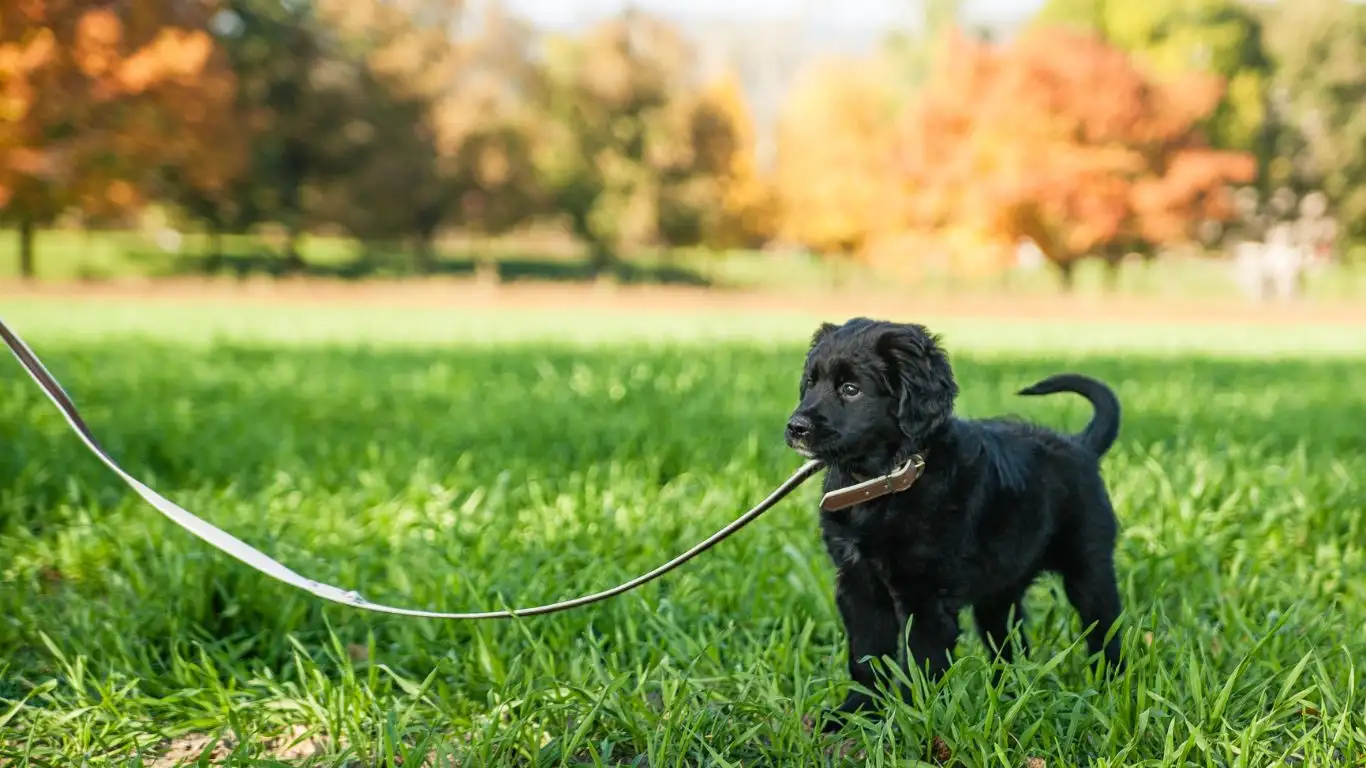
The Role of Consistency and Patience in Brain Training
As with any type of dog training, consistency and patience are key to success. Brain training games might take a little longer to master than traditional obedience training, but the results are worth the effort. When you consistently incorporate these games into your dog’s routine, they’ll begin to look forward to these sessions and grow more confident in their abilities.
One of the biggest mistakes I see owners make when training dogs is being too impatient or expecting immediate results. Training a dog to enjoy brain games requires time, practice, and positive reinforcement. I always remind pet owners that dogs, just like humans, need time to process new information, and that’s part of what makes brain training so effective. When your dog gets it, the sense of accomplishment is not just theirs, but yours too!
Don’t rush the process. Celebrate the small victories, and be patient with your dog. They will eventually learn to enjoy brain training and will be excited to take on new challenges.
Understanding the Importance of Mental Exercise for Dogs

When we think about training our dogs, it’s easy to focus on physical exercise—walks, runs, fetch, and other activities that get them moving. While all of these are crucial for maintaining a dog’s health, mental exercise is just as important. In fact, the brain is one of the most vital parts of your dog’s body that requires consistent activity. As I’ve learned over the years as a Canine-Assisted Therapy Trainer, brain training games not only enhance mental agility but also improve their overall quality of life.
When dogs are mentally stimulated, they’re less likely to develop behavioral issues such as destructive chewing, excessive barking, or anxiety. It’s similar to how we feel when we’ve had a good mental workout—clear, focused, and content. In many cases, keeping your dog mentally active through games and training exercises can be a game-changer in their overall behavior and well-being.
The Psychological Benefits of Brain Games for Dogs
Beyond simply keeping your dog entertained, brain games can provide psychological benefits. They help to:
- Reduce Anxiety: Dogs that are mentally engaged are less likely to feel bored, stressed, or anxious. Brain games help redirect their focus, providing a sense of accomplishment.
- Improve Confidence: Successfully completing a challenging brain game boosts a dog’s confidence, giving them a sense of pride and helping them become more comfortable in various situations.
- Enhance Problem-Solving Skills: Dogs that regularly engage in brain games develop better problem-solving abilities. These skills carry over into other areas of life, including social interactions with other dogs and humans.
The key takeaway is that mental exercise isn’t just about keeping your dog busy. It’s about enhancing their cognitive abilities and ensuring they live a fulfilled, balanced life. Dogs that are mentally stimulated are happier and healthier overall, which is why it’s crucial to incorporate brain training games into their daily routine.
How to Know If Your Dog Enjoys Brain Training Games
As much as we might love to see our dogs dive into brain training games, it’s important to gauge their level of enjoyment and interest. Not every dog will respond to every game in the same way, so part of being an effective trainer is understanding when to switch gears or try a new approach.
Signs Your Dog Enjoys Brain Training Games
- Focus and Engagement: If your dog stays focused and engaged with the game, it’s a good sign they enjoy it. They’ll remain attentive, following the rules, and trying different strategies to solve the puzzle.
- Excitement and Eagerness: If your dog is eager to participate in the game and seems excited, even before you start, that’s a clear indication they enjoy the challenge.
- Increased Playfulness: Dogs that enjoy mental challenges often get more playful during and after brain games. They may engage in other activities or exhibit excited behavior like jumping or wagging their tails.
If your dog seems frustrated or loses interest quickly, it may be time to adjust the difficulty level or switch to a different type of game. The ultimate goal is to make sure that the training sessions remain fun and rewarding for both of you!
Signs Your Dog May Need a Different Approach
Not all dogs are going to react positively to brain games right away, and that’s perfectly okay. Some dogs may need a little extra patience or a change in how the games are presented. Here are a few signs that it may be time to tweak your approach:
- Frustration: If your dog seems frustrated or starts to show signs of stress, like excessive panting, pacing, or whining, it may be an indicator that the game is too challenging or not enjoyable.
- Disinterest: If your dog loses interest quickly or seems distracted, it could be a sign that the game isn’t engaging enough. Try switching things up with new activities or simpler challenges.
- Repetitive Behavior: If your dog keeps making the same mistakes or is unable to solve the puzzle, it might be time to lower the difficulty or break the game down into smaller, more manageable steps.
Just like with physical training, mental exercises should always be adapted to meet your dog’s needs. With time and experimentation, you’ll find what works best for your dog, ensuring that their brain training sessions remain effective and enjoyable.
Why Consistency and Patience are Essential
As with any training method, consistency and patience are crucial to success. Dogs thrive when there is a predictable routine, and brain training is no different. While it might be tempting to push your dog to solve the most complex puzzles right away, remember that building a solid foundation takes time. Take a step-by-step approach and gradually increase the difficulty as your dog masters each game.
In my experience, keeping sessions short and sweet works best. Dogs, especially younger ones, have short attention spans, so it’s important to keep the training sessions around 10-15 minutes. This allows them to stay focused without feeling overwhelmed or tired. And don’t forget to always end on a positive note with praise and rewards to reinforce the enjoyment of the activity.
How to Keep the Training Fun and Engaging

While brain games are incredibly effective, it’s essential to maintain an atmosphere of fun and playfulness. Here are a few tips to make sure your dog continues to enjoy the process:
- Mix It Up: Don’t let the routine get stale. Regularly introduce new games or rotate between different types of brain exercises to keep things interesting for your dog.
- Incorporate Play: As I always tell clients, play is the key to keeping a dog’s enthusiasm high. Don’t be afraid to let the brain training session flow into a more playful activity like fetch or tug-of-war.
- Celebrate Successes: Whether your dog completes a simple task or masters a complex puzzle, celebrate every achievement. This not only reinforces the behavior but also strengthens the bond between you and your dog.
References
For more information on dog behavior and training, check out these reputable sources:
Disclaimer
The information provided in this article is based on personal experience and professional knowledge as a Canine-Assisted Therapy Trainer. While these brain training games have been effective for many dogs, every dog is unique. If you have concerns about your dog’s behavior or mental health, please consult a professional veterinarian or dog trainer for personalized advice.
